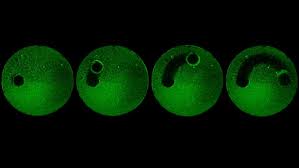
Breaking News
 Trump Announces MASSIVE Social Security Cleanup -- 275,000 Illegal Aliens Removed...
Trump Announces MASSIVE Social Security Cleanup -- 275,000 Illegal Aliens Removed...
 BOMBSHELL: Kash Patel Uncovers Obama Deputy AG Sally Yates' Email Ordering FBI Agents...
BOMBSHELL: Kash Patel Uncovers Obama Deputy AG Sally Yates' Email Ordering FBI Agents...
 China Unveils World's First Pregnancy-Simulating Humanoid Robot
China Unveils World's First Pregnancy-Simulating Humanoid Robot
 How Coca-Cola's Secret Formula Has Changed Over Time
How Coca-Cola's Secret Formula Has Changed Over Time
Top Tech News
 1,000 miles: EV range world record demolished ... by a pickup truck
1,000 miles: EV range world record demolished ... by a pickup truck
 Fermented Stevia Extract Kills Pancreatic Cancer Cells In Lab Tests
Fermented Stevia Extract Kills Pancreatic Cancer Cells In Lab Tests
 3D printing set to slash nuclear plant build times & costs
3D printing set to slash nuclear plant build times & costs
 You can design the wheels for NASA's next moon vehicle with the 'Rock and Roll Challenge
You can design the wheels for NASA's next moon vehicle with the 'Rock and Roll Challenge
 'Robot skin' beats human reflexes, transforms grip with fabric-powered touch
'Robot skin' beats human reflexes, transforms grip with fabric-powered touch
 World's first nuclear fusion plant being built in US to power Microsoft data centers
World's first nuclear fusion plant being built in US to power Microsoft data centers
 The mitochondria are more than just the "powerhouse of the cell" – they initiate immune...
The mitochondria are more than just the "powerhouse of the cell" – they initiate immune...
 Historic Aviation Engine Advance to Unlock Hypersonic Mach 10 Planes
Historic Aviation Engine Advance to Unlock Hypersonic Mach 10 Planes
 OpenAI CEO Sam Altman Pitches Eyeball-Scanning World ID to Bankers
OpenAI CEO Sam Altman Pitches Eyeball-Scanning World ID to Bankers
 New 3D-printed titanium alloy is stronger and cheaper than ever before
New 3D-printed titanium alloy is stronger and cheaper than ever before
The future of dental cleaning? Biofilm-busting micro-robots impress in precision...

An army of tiny robots scuttling about inside your mouth cleaning your teeth. It's a disquieting thought, and yet it might be one of the most effective ways to deal with the sticky bacterial biofilms that coat our choppers – as well as water pipes, catheters and other tough-to-clean items.
Run your tongue around your teeth and enjoy the feeling of the biofilms that are pretty much always coating them. Biofilms are little communities of micro-organisms, bacterial and otherwise, that gather together, sticking their cell walls together and bonding themselves to surfaces in three-dimensional structures, scaffolded together with all sorts of claggy polymers. They've been described as little microbe cities, functioning as tiny co-ordinated communities.
They form all over the place – not just in our mouths as dental plaque, but on your dirty dishes, on rocks, in pipes, surgical equipment, anywhere liquid and microbes meet – and when bacteria gang up in these gloopy films, they can become far more resistant to antibiotics than usual.
And they're tough to break – hence why dentists have to spend so much time scraping away at plaque deposits on your teeth in a fiddly and uncomfortable process that's probably about as much fun for the dentist as it is for the patient.



